Apple's iPhone 16 launch is off to a slow start, with early sales suggesting that buyers might be more interested in 2023's models than the latest upgrades.
According to early data, the iPhone 16 models, released in September 2024, appear to be off to a slower start compared to last year's iPhone 15 lineup. Unlike recent years, the 2024 release aligns closely with Apple's typical pre-pandemic launch schedule, providing a comparable look at year-over-year performance.
Reports, including one from Consumer Intelligence Research Partners (CIRP), reveal that the iPhone 16's initial sales haven't matched the swift uptake of the iPhone 15 lineup from the same period in 2023.
During their first two weeks of sales, these models collectively represented a 20% share of U.S. iPhone sales. In contrast, the iPhone 15 series captured a significantly higher 29% share during the same timeframe in 2023, indicating a noticeable drop in early adoption for the latest models.
This difference becomes even more apparent when examining the high-end models. In September 2024, the iPhone 16 Pro and Pro Max constituted 12% of total iPhone sales, down from the iPhone 15 Pro and Pro Max's 15% share in the same period a year prior.
Given Apple's continued sales of its legacy models alongside new ones, the shift in consumer interest from the latest releases to last year's models is particularly noteworthy.
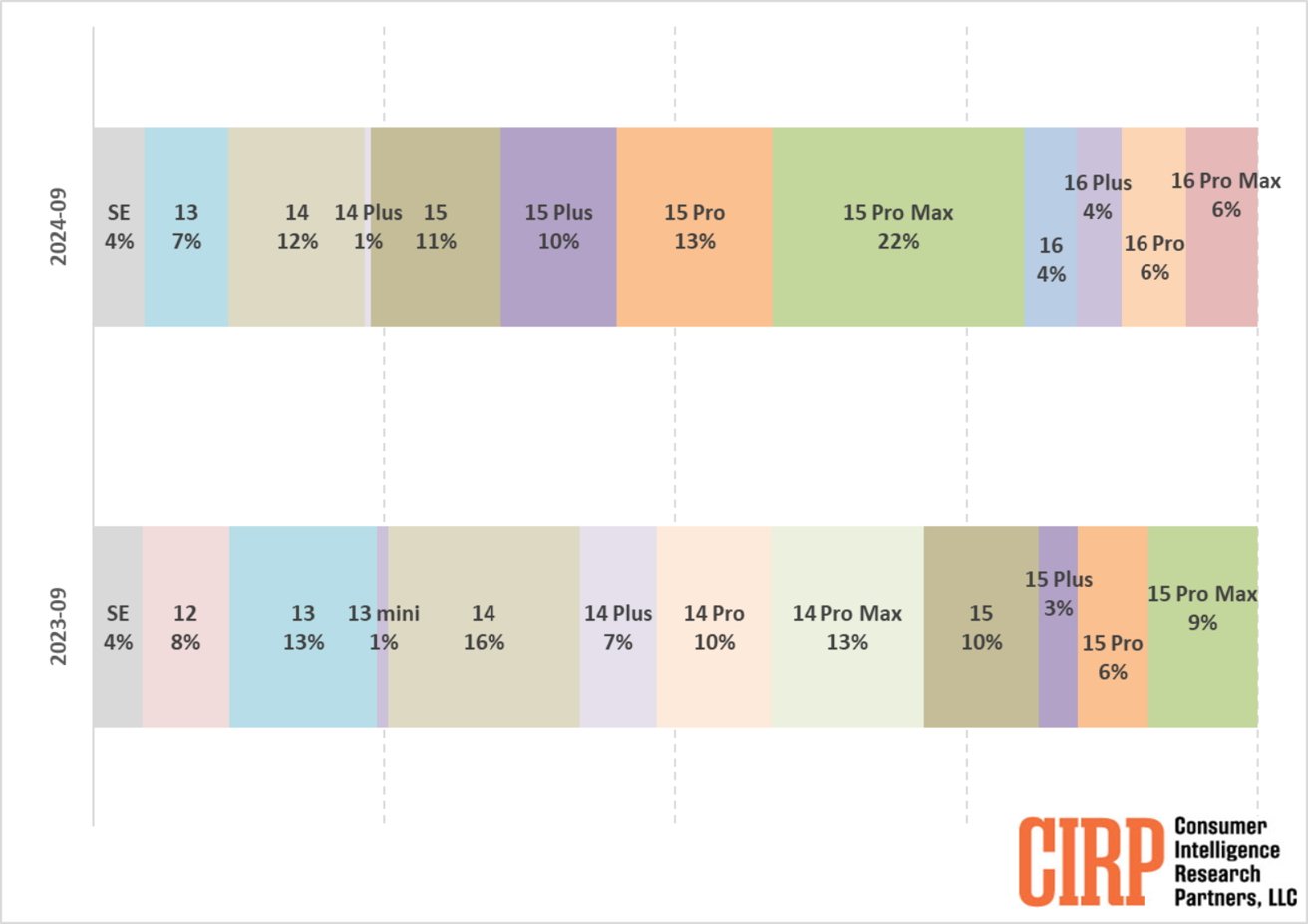 iPhone model distribution (quarters ending in September 2024 and September 2023). Image credit: CIRP
iPhone model distribution (quarters ending in September 2024 and September 2023). Image credit: CIRPThe persistence of older models in the market provides further context to this trend. In September 2023, iPhone 13 and older models accounted for around 26% of U.S. sales, whereas in 2024, iPhone 14 and older models contributed to 24% of sales, indicating a relatively steady preference for older devices over the years.
The consistency contrasts with the noticeable shift toward year-old models in 2024. In 2023, iPhone 15 models accounted for 56% of sales in the September 2024 quarter, a notable increase from the 46% share the iPhone 14 models held in 2023.
The 10% increase in demand for the old models suggests a reluctance among consumers to upgrade to the latest releases immediately.
Analyst perspectives on future performance
Analysts have noted adjustments in Apple's production strategy to accommodate these dynamics. JP Morgan reported that while demand for the iPhone 16 series is stable, it slightly trails the iPhone 15 series in availability and shipping times.
Notably, U.S. shipping times for the iPhone 16 Pro Max have shortened from 21 days in 2023 to 15 days in 2024, indicating Apple's efforts to efficiently manage supply for its premium models.
Meanwhile, analyst Ming-Chi Kuo observed that demand for the iPhone 16 Pro models has met Apple's expectations, prompting the company to maintain production even during China's National Day holiday to fulfill orders. However, demand for the iPhone 16 and 16 Plus has been more subdued, leading Apple to cautiously scale back on some component orders for these baseline models by an estimated 3% to 5%.
While the reduction reflects the tepid demand for non-Pro models, it's unlikely to significantly impact overall production levels, as Apple maintains steady output for the high-demand Pro models.
As the holiday season approaches, Apple may see renewed interest, especially in the iPhone 16 Pro models. The period could prompt a reevaluation of the positioning and appeal of the standard iPhone 16 and 16 Plus, potentially setting a new direction for future product cycles.
 Andrew Orr
Andrew Orr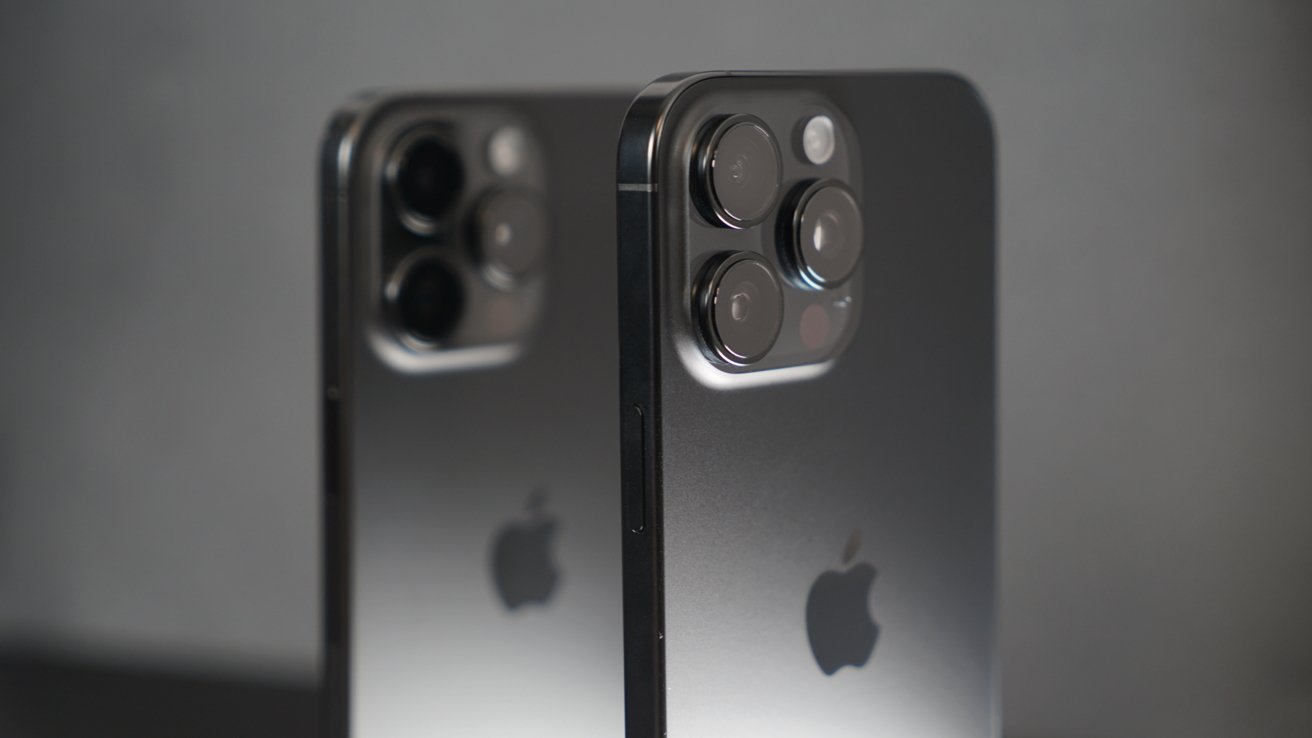

-m.jpg)






 Wesley Hilliard
Wesley Hilliard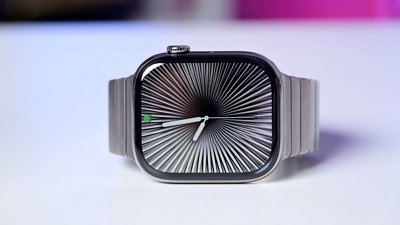
 Amber Neely
Amber Neely
 William Gallagher
William Gallagher
 Christine McKee
Christine McKee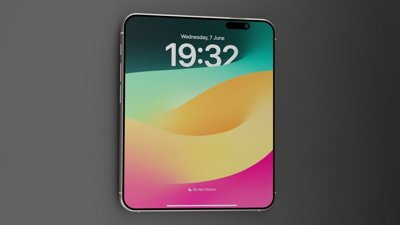
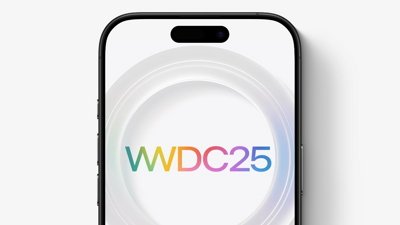

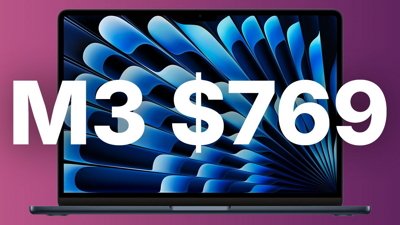
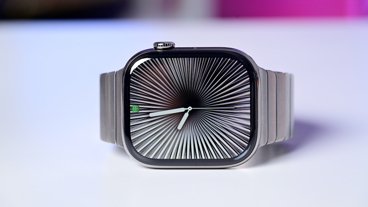
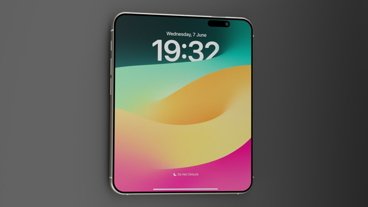








12 Comments
And the basis for this supposed sales data? Oh, that's right, it's all "proprietary" and secret, so no way to actually fact check it. But I'm sure CIRP appreciates AppleInsider continuing to act as a free marketing platform for them. Seriously, why not categorize this as sponsored content, since that's effectively what it is, and at least get paid for your efforts? Apple has an incredibly diverse supply chain, and the idea that supposed "analysts," with no input from Apple, could know that Apple cut component orders from 3%-5% is ridiculous on the face of it.
Way more interesting would be actual use statistics with, granular enough to also see which model is actually being used, grouped per screen size. I suspect many people still use their 2020/2022 SE and Mini phones due to lack of proper upgrade opportunities (read: the missing 16 mini). I still expect Apple will some day realise a proper market does exist for the Mini. I don't care about the SE is expected to grow to iPhone 16 size. It's too big for a daily business phone.
I really don't understand why folks are so confused that the Pro models are outselling non Pro models.
If someone has been holding off upgrading or not and is buying an iPhone that they know will need more power than usual to support Apple Intelligence. Then why in the world would they buy a non Pro model. It's not like past years where "you know what, this model is good enough"
But I guess we'll all find out tomorrow.
Tomorrow’s earnings announcement will include just nine days of iPhone 16 sales. It will be unwise to jump conclusions on the new models’ popularity. Moreover Apple hasn’t provided unit sales data for years.
Q4 results will be a solid indicator of the new generation’s popularity. Those earnings results should be announced in late January 2025.
It makes sense that the people with the most amount of money to burn would quickly buy the more expensive model.
The rest of us are saving, waiting for refurbs, or hoping against hope for another iPhone Mini, because the regular model is still too friggin big.